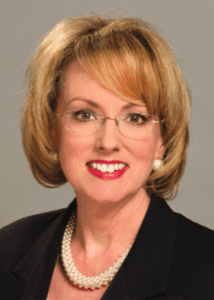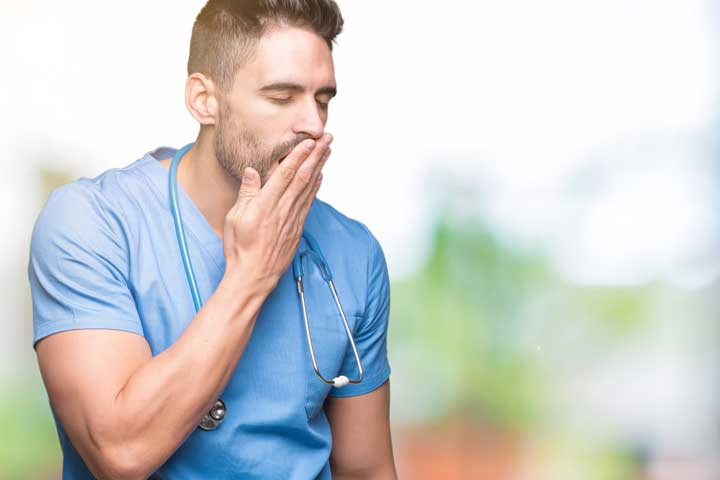A professional wake-up call
NURSES dedicate their lives to helping others. Most of us say the profession is rewarding and fulfilling, with many sources of satisfaction gained through the different roles we perform day

How sleepy are you? How likely are you to fall asleep while sitting and reading, watching TV, sitting inactive in a public place (such as a theater or in a meeting), or as a passenger in a car? The answers to these questions could be life altering. We’re learning that sleepiness on the job is directly linked to patient harm, including mortality.
Researchers say you can be “awake” but are actually sleeping on the job because of prolonged mental, physical, and emotional exhaustion that adds up to burnout. Burnout is more like a battery draining over time rather than a blown-out candle. Excessive demands on one’s energy caused by a poor work environment, extreme job requirements, and inadequate coping skills drain the battery. The result is a combination of physical fatigue, emotional exhaustion, and cognitive weariness affecting attitude, safe practice, and productivity.
The Joint Commission acknowledged the link between fatigue and adverse events, raised concern for patient safety and the quality of patient care, and issued a sentinel event alert “Health care worker fatigue and patient safety” in 2011, which was updated in 2018 (jointcommission.org/sea_issue_48).
Ann Rogers, PhD, RN, FAAN, a nationally renowned sleep medicine expert, published one of the first and largest studies on nurses documenting that error rates triple when the nurses work shifts longer than 12.5 hours. Other research reveals increased risk of occupational injuries when shifts exceed 12 hours. Evidence abounds demonstrating beyond a doubt that fatigue impacts physical and cognitive performance, and ultimately safety.
Nurses need to be alert and healthy to give the best care to patients and to take care of themselves. The National Academy of Medicine says that 43% of inpatient nurses have a high degree of emotional exhaustion.
Time to wake up
For years, other industries have recognized risks for burnout and proactively manage it. NASA says success can be maximized by assessing the entire organization for fatigue-related risks, educating staff at every level of the organization about sleep and the effects of fatigue on safety, trying different combinations of countermeasures to find what works best for individuals, and developing and maintaining a safety culture. NASA studies emphasize that the only way to counteract the severe consequences of sleepiness, fatigue, and burnout is to sleep.
Use these tips to create your own “fatigue-management plan”:
- Actively engage in conversations with others, don’t just listen and nod.
- Move. Do something that involves physical action, even if it’s just stretching.
- Practice strategic caffeine consumption (don’t use caffeine when you already are alert and avoid caffeine near bedtime).
- Know your sleep needs and what “tired” feels like for you. (For more strategies about improving your sleep, visit nursingworld.org/practice-policy/work-environment/health-safety/healthy-nurse-healthy-nation/healthy-sleep.)
- Learn to manage stress. Keep a stress diary and document time, cause, source, and your reaction.
- Create a burnout-prevention work group on your unit or in your organization.
As the public, payers, and federal and regulatory agencies push incentives for high-quality, safer care, it’s time to recognize sleepiness, the impact of sleep deficits on fatigue levels, and the risks to personal and professional safety. How sleepy are you? How would you know?


Lillee Gelinas, MSN, RN, CPPS, FAAN
Editor-in-Chief
Selected resources
Aiken LH, Clarke SP, Sloane DM, Sochalski J, Silber JH. Hospital nurse staffing and patient mortality, nurse burnout, and job dissatisfaction. JAMA. 2002;288(16):1987-93.
Dawson JM. Tips for achieving healthy sleep. Am Nurse Today. 2013;8(5):24. myamericannurse.com/tips-for-achieving-healthy-sleep/
Dyrbye LN, Shanafelt TD, Sinsky CA, et al. Burnout among health care professionals: A call to explore and address this underrecognized threat to safe, high-quality care. National Academy of Medicine. 2017. nam.edu/burnout-among-health-care-professionals-a-call-to-explore-and-address-this-underrecognized-threat-to-safe-high-quality-care
Joint Commission, The. Sentinel event alert #48: Health care worker fatigue and patient safety. May 14, 2018. jointcommission.org/assets/1/18/SEA_48_HCW_Fatigue_FINAL_w_2018_addendum.pdf
National Academy of Medicine. Action collaborative on clinician well-being and resilience. nam.edu/initiatives/clinician-resilience-and-well-being/



















1 Comment.
People need to be checked for narcolepsy if always needing a nap during the daytime, waking up all night long with intense dreams, waking up with hallucinations or sleep paralysis and so forth.
Apnea is another undertreated and underrecognized condition.
I tell my patients to get checked for apnea to improve mood, lose weight, lower blood sugar and blood pressure, increase memory/focus/concentration and feel better overall. Sadly, they see the PCP, get referred to someone else (pulmonology usually) and have to wait another few months for the study and then results. Even thin people with a small oropharyngeal opening can have apena!!!
Please get tested even if you suspect it. I dx myself with narcolepsy age 38!! via HLA narcolepsy panel and a sleep study for narcolepsy. Confirmed by my friend who is a neurologist and sleep specialist.